Telemonitoring in heart failure
Telemonitoring for chronic heart failure supports cardiological practices and their patients in the prevention of cardiac decompensation - and has proven to be an innovative form of care with great benefits for both sides.
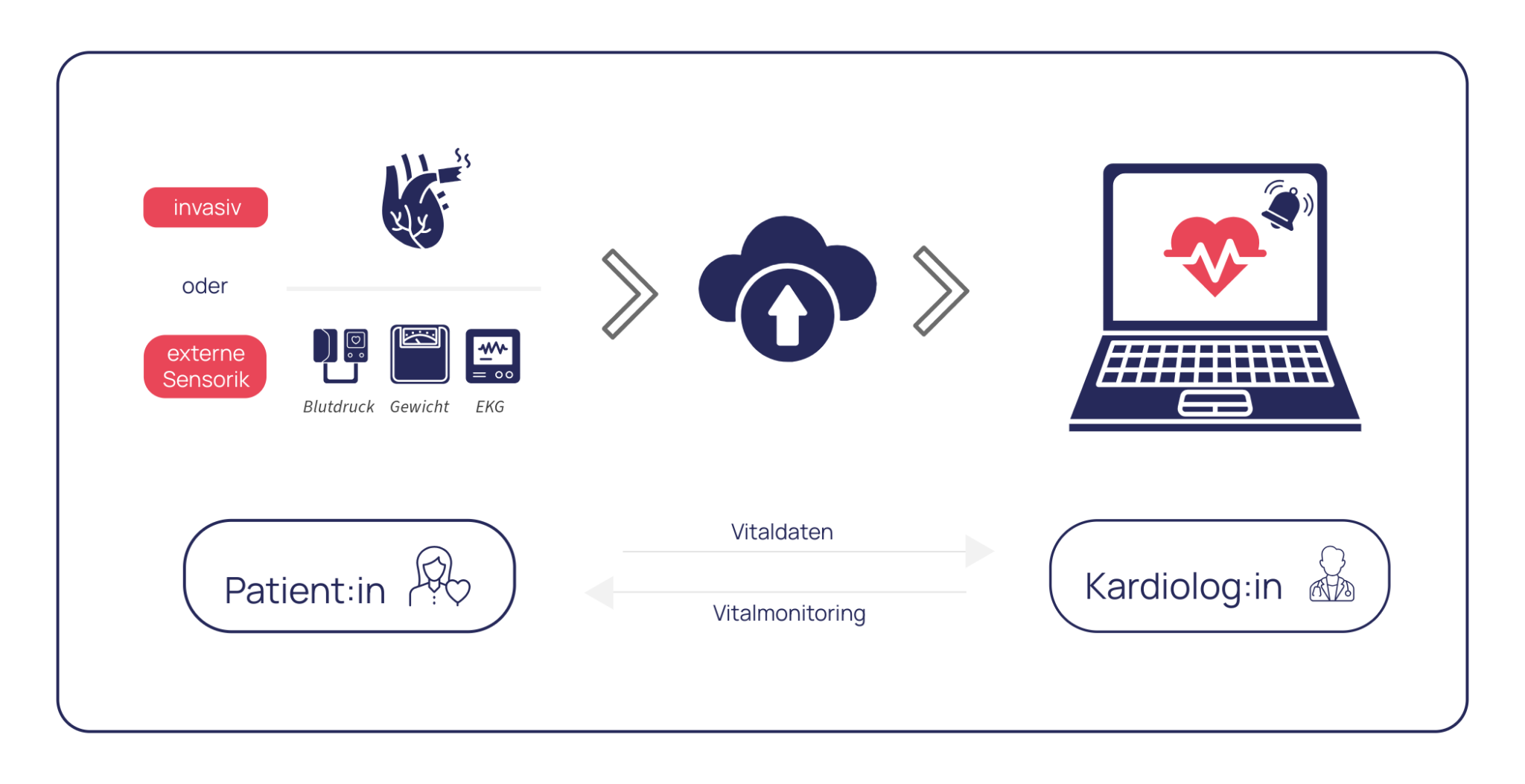
Table of contents
Telemonitoring for chronic heart failure has been part of the benefits catalogue of statutory (and since 2024 also private) health insurance companies in Germany since January 2022. This benefits patients and cardiological practices alike.
Indication: Medical requirements
Telemonitoring for heart failure is indicated for patients who fulfil the following criteria:
- Disease stage NYHA II or NYHA III with an ejection fraction < 40%
- Patient has an implanted cardiac device (ICD, CRT-P, CRT-D) or has been hospitalised for cardiac decompensation within the last 12 months.
- Patient is treated according to guidelines
- Patient is cognitively, physically and technically able to participate in telemonitoring
What are the benefits of telemonitoring for heart failure?
Medical benefits
- Reduction of cardiac decompensations (see Case study)
- Reduction in hospital stays
- Improved survival rate

Advantages for cardiologists
- Better data basis for treatment decisions
- Efficient form of care relieves pressure on practice operations
- Extrabudgetary remuneration
Advantages for patients
- Close medical care
- More safety in everyday life
- Improved understanding of the disease
Patients & relatives
can find helpful information on the benefits, procedure and access to telemonitoring for heart failure here:
Extrabudgetary remuneration
With the Telemonitoring in heart failure billing of new services via the EBM has been possible for panel doctors since January 2022.
For private practices, the German Medical Association and the German Association of Statutory Health Insurance Funds (PKV) have established joint billing recommendations for telemonitoring in chronic heart failure. Since January 2024, billing is therefore also possible according to the GOÄ.

EBM: The GOPs in detail
If you exhaust all possibilities, you can maximum 1,441 € per patient:in/year bill. This figure results from the following fee schedule items in the EBM:
Power
Remuneration
GOP 13583: Guidance and education of patients on telemonitoring
11,77 € (95 points, 1x per year)
GOP 40910: Flat rate for the required basic equipment with external measuring devices
68,00 € (1x per quarter)
GOP 13586: Telemonitoring in heart failure using external measuring devices
260,26 € (2,100 points, 1x per quarter)
GOP 13587 (optional): Surcharge to GOP 13586 for intensified telemonitoring on weekends and public holidays
29,12 € (235 points, 1x per quarter)
Calculate now: Your possible remuneration according to the EBM
Your specific remuneration depends on the services you provide as a cardiology practice within the framework of telemonitoring, as well as on the number of your heart failure patients who use the medical preconditions for telemonitoring.
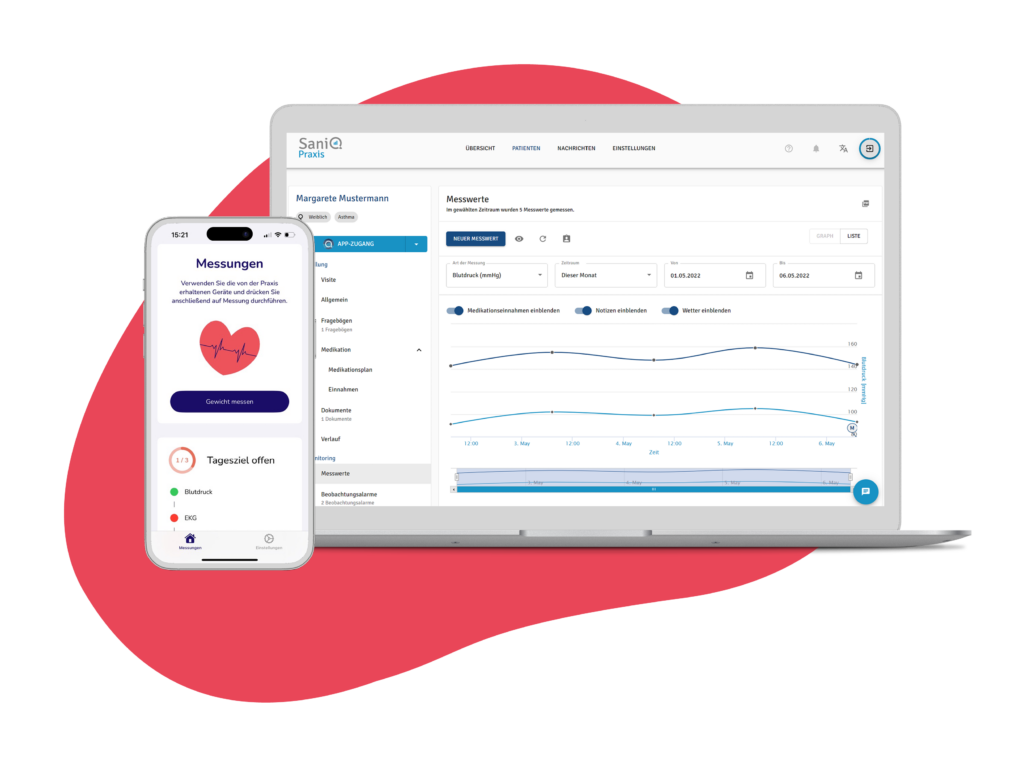
Heart failure monitoring.
Finally made easy with SaniQ HERZ
Digital heart failure monitoring.
Finally made easy with SaniQ HERZ
- State-of-the-art sensor technology
- New, simplified patient app
- the most attractive price model on the market
The billing recommendations according to the GOÄ
The following information on billing according to the GOÄ can be found on the Homepage of the PKV:
Joint billing recommendation of the German Medical Association (BÄK), the Association of Private Health Insurers (PKV-Verband) and the organisations responsible for costs in cases of illness, nursing care and childbirth in accordance with federal and state civil service regulations on telemonitoring for chronic heart failure:
Power
Remuneration
analogue number 33 GOÄ : Instruction and education of patients on the basic principles of telemonitoring, the use of the devices used and self-management
Fee at 1.0/2.3/3.5 times the rate: EUR 17.49/40.22/61.20
The service is billable once at the start of treatment
analogue number 551 GOÄ: Data acquisition, analysis and viewing of any alerts that occur (data management) using cardiac units telemetrically
transmitted data as part of telemonitoring for chronic heart failure, per calendar day
Fee at 1.0/1.8/2.5 times the rate: EUR 2.80/5.04/6.99
analogue number 600 GOÄ: Data acquisition, analysis and viewing of any warning messages (data management) using external telemetric measuring devices
transmitted data as part of telemonitoring for chronic heart failure, per calendar day
Fee at 1.0/2.3/3.5 times the rate: EUR 4.25/9.79/14.89
according to No. 60 GOÄ: Consultative discussion of alerts and the associated measures and/or patient-specific discussion between
the physicians involved in telemonitoring, including the corresponding documentation, per participating physician
Fee at 1.0/2.3/3.5 times the rate: EUR 6.99/16.09/24.48
The service according to No. 60 GOÄ is not billable if the doctors belong to the same medical telemedicine centre (TMZ).
Technical and regulatory requirements
When calculating their expected revenue, cardiologists must offset the effort and costs incurred by telemonitoring. Regulatory and technical requirements in particular must be taken into account here.
You essentially need 3 things:
- an accreditation as a telemedicine centre (TMZ)
- II. a telemonitoring software (e.g.: SaniQ HERZ)
- III. external measuring devices for patients
With the telemonitoring software SaniQ HEART:
- we offer you the most attractive price model on the market
- fulfil all technical, regulatory and data protection requirements
- you and your patients receive comprehensive technical support
Interview with Dr Norbert Smetak, Chairman of the German Association of Cardiologists in Private Practice (BNK), on the indication, remuneration and implementation of telemonitoring for heart failure:
I. Approval as a telemedicine centre (TMZ)
In telemonitoring, patient health data is collected (using external measuring devices or invasive devices) and then transmitted to a telemedicine centre (TMZ) via a transmitter. As a cardiologist, you can take on the tasks of the TMZ if you have been certified as a TMZ by your Association of Statutory Health Insurance Physicians (KV). This gives you the advantage of being able to charge for the tasks you take on via the new GOPs in the EBM bill extrabudgetary can.
Within the framework of certification, cardiologists must prove certain professional and technical requirements to the KV.
Requirements for admission as a TMZ:
1. Licensed specialist for internal medicine and cardiology
2. Participation in SHI-accredited medical care or work in a SHI-accredited MVZ (according to § 95 SGB V)
3. Approval according to the Quality Assurance Agreement (QA Agreement) Rhythm Implant Control
4. Proof of fulfilment of the requirements for technical equipment in accordance with the Quality Assurance Agreement on Telemonitoring in Heart Failure (§5)
The most important tasks of a telemedicine centre:
- The suitability test of the patients for telemonitoring with regard to the medical requirements at the beginning of the treatment.
- Provision and maintenance of the technical infrastructure (usually covered by the telemonitoring software provider)
- guiding patients in the use of the required software and technology
- the digital monitoring and professional assessment of incoming health data
With our SaniQ HERZ telemonitoring software you fulfil all technical, regulatory and data protection requirements. You also receive support with the authorisation as a TMZ as well as comprehensive support with setting up and maintaining the technical infrastructure.
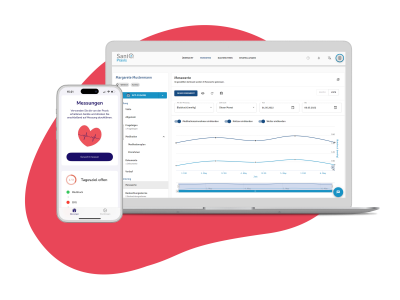
Digital telemonitoring for heart failure has been part of standard care since 2022. We ask Dr Ralph Rüdelstein, Head Physician in the Department of Internal Medicine at St. Nikolaus Stiftshospital in Andernach, how it works in practice.
1. what are the medical benefits of telemonitoring in heart failure?
Dr Rüdelstein, MD: By telemonitoring patients with heart failure, we can recognise complications much earlier and adjust the medication accordingly or increase the dosage. This provides us with important information that helps us to prevent cardiac decompensation, for example, and to provide better care for patients at risk.
2 How is telemonitoring received by those affected?
Dr Rüdelstein, MD: For the connected patients, telemonitoring is a kind of protective shield: they can rely on the fact that we can intervene directly and appropriately in the event of abnormal values. This creates security and these patients benefit from it!
3 What are your experiences from a medical perspective?
Dr Rüdelstein, MD: We get on very well with the SaniQ telemonitoring platform. The big advantage of telemonitoring is that I can organise when I look at the platform myself - it's just important that I (or a member of staff) find the time to do it once a day - and I do!
II Telemonitoring software
For telemonitoring, you need software such as SaniQ. The software records the patient's health data and enables cardiological practices to monitor patients remotely - in other words, it is the The heart of telemedical care. The software is also used to store the personal and health-related data collected.
The "Telemonitoring in heart failure" quality assurance agreement includes the following Requirements for the telemonitoring software listed:
- Compliance with data protection requirements
- Suitability for daily complete data transmission
- Suitability for setting patient-specific limit values and for issuing warnings when limit values are exceeded or not reached
You should also pay attention to this when choosing a provider:
- Is the software a browser or web application (or does it have to be installed separately in my practice)?
- Is technical support guaranteed for me and my patients?
- Who is responsible for shipping the external measuring devices?
- How easy is telemonitoring for my patients? Are there supporting materials or instructions for implementing telemonitoring?
- Do the measuring devices transmit the vital signs via Bluetooth pairing or mobile radio (no pairing required)?
- Does the software enable telemonitoring with cardiac units?
- Is the pricing model fair? Is the billing per patient?

Heart failure monitoring.
Finally made easy with SaniQ HERZ
Digital heart failure monitoring.
Finally made easy with SaniQ HERZ
- State-of-the-art sensor technology
- New, simplified patient app
- the most attractive price model on the market
III External measuring devices for patients
As part of telemonitoring for heart failure, vital parameters are recorded using implanted cardiac units or external measuring devices. Both are possible with SaniQ.
When monitoring with external measuring devices 3 Vital signs recorded:
- Body weight
- electrical heartbeat
- Blood pressure
To this end, we provide patients with an ECG device, a blood pressure monitor and a body scale to take home. These are state-of-the-art sensor systems that automatically analyse the measured values immediately after the measurement. by mobile phone into your practice system. This makes the cumbersome and error-prone pairing of devices via Bluetooth superfluous for patients.
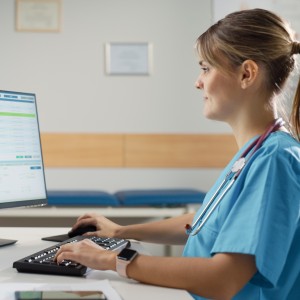
Frequently asked questions about telemonitoring for heart failure
What is the daily workload for cardiologists and their practice team?
For telemonitoring in heart failure, you and your practice team provide certain services to care for patients in accordance with the TmHi quality assurance agreement. So what do you have to do?
effort for the practice team: ⌀ 10-20 minutes daily depending on the number of patients
- Cardiologists can delegate the use of the practice software entirely to their practice team.
- The daily routine tasks (processing alerts, checking measurement results that have not been transmitted, patient communication) only take a few minutes.
Effort for cardiologists: depending on demand
- If medical intervention is required, coordinate therapeutic countermeasures with your staff (e.g. adjust medication)
As you can see, telemonitoring is simple and easy to implement. It even relieves your practice operations because you can Reduce unplanned visits to the practice.
How quickly do you have to react if necessary?
Telemonitoring for heart failure is No emergency response systemwhich requires immediate intervention in medical emergencies. It is used for medical monitoring of central vital signs and for adjusting therapy in the event of a significant deterioration in the values.
If a patient's values deteriorate or exceed or fall below the set standard range, you will receive a warning message via SaniQ. You should check such a message for a possible need for action on the following working day at the latest (the following day in the case of intensified monitoring).
What about weekends, public holidays, holidays and absences?
According to the G-BA decision, you are generally obliged to respond within 48 hours of receiving a warning message in SaniQ. However, weekends and public holidays are excluded.
You should communicate longer absences (e.g. in the event of holiday or illness) transparently to your involved patients by email. Many practices also ask patients to sign a disclaimer.
Conclusion
From a medical and budgetary point of view, it is worthwhile for cardiological practices to stop postponing the topic and start cardiac telemonitoring.
Do you still have questions? Then we have compiled a FAQ with frequently asked questions about telemonitoring for you below this article. If you have any further questions, we are also happy to help and advise you at any time via our Contact form or via our hotline:
- Cardio hotline:
+49 261 13 498 698
Sources:
- Anker SD, Koehler F, Abraham WT (2011) Telemedicine and remote management of patients with heart failure. Lancet 378:731-739
- Kassenärztliche Bundesvereinigung & GKV-Spitzenverband: Quality Assurance Agreement Telemonitoring in Heart Failure. 2022.
These articles might be of interest to you:
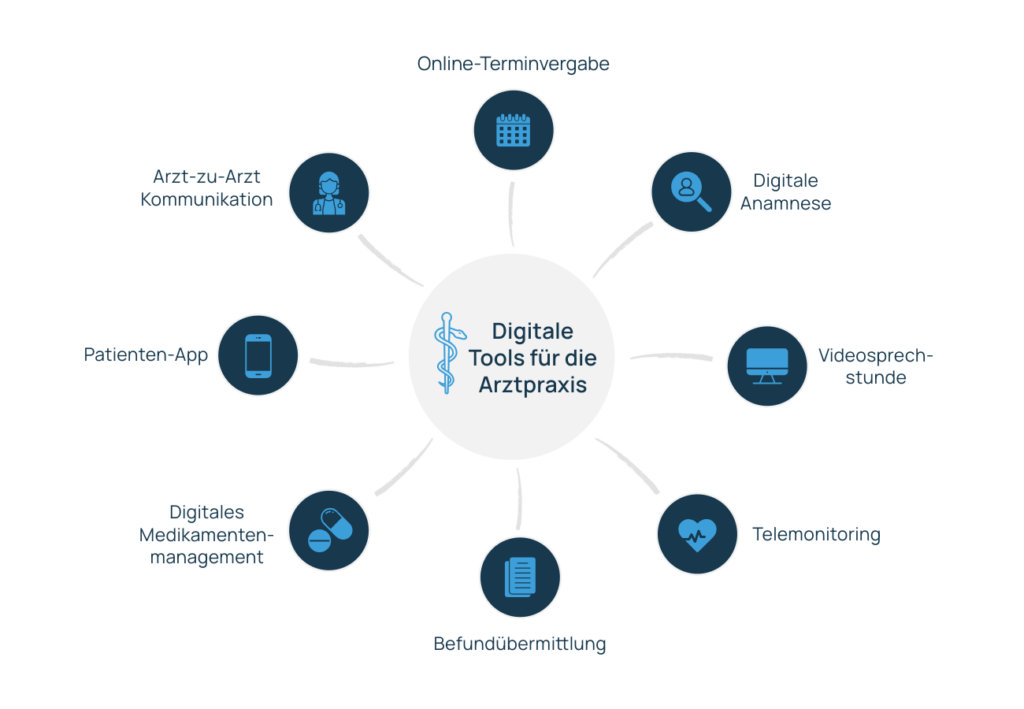
Patient care: Digital tools for the medical practice
Digitalisation is putting traditional methods of healthcare provision to the test. While practice visits and personal contact are still important, digital technologies offer valuable support. Which digital tools can usefully supplement outpatient patient care?

Case study: Telemonitoring prevents cardiac decompensation
A concrete case from a cardiological group practice in Krefeld shows how telemonitoring of important vital signs and direct communication with patients can help to identify and treat critical events at an early stage.

